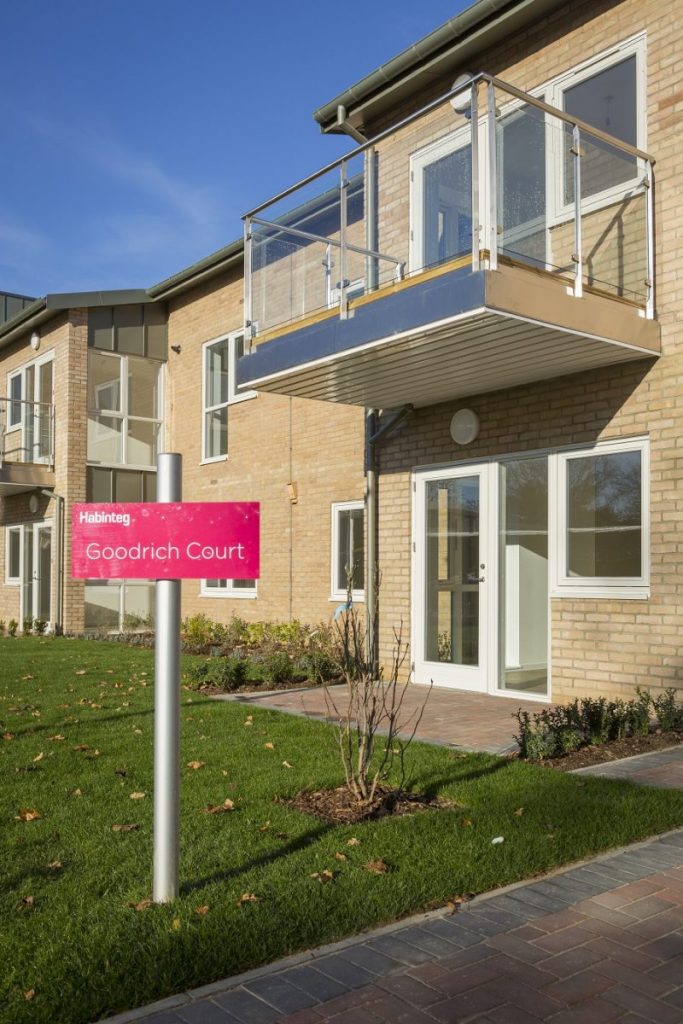Deborah Stephenson, Director of Operations at Habinteg highlights the impact of living in accessible homes and the importance of inclusive design
Amongst all the technical debate about accessible housing standards in recent months, I wish planners, developers and others responsible for the early stages of development could see the value of accessible homes for end users – the people that need them.
Accessible homes can change lives.
For me, this was particularly well illustrated recently when I attended the opening of our new accessible and inclusive housing development in Hounslow. The scheme features a mix of Lifetime Homes and wheelchair accessible properties as this development began prior to the new Part M (4) accessible categories of the Building Regulations coming into force (more on those later).
I felt lucky to witness a side of the development process that design professionals don’t always get to see – delighted tenants preparing to move into their new accessible homes. The real impact of finally moving into an accessible home and living in an inclusive environment was clearly evident from speaking to them.
As our housing managers signed families up and showed them to their new homes, it was clear how important the work of local authorities and planners in delivering suitable homes for local people really is. For some tenants, there was a feeling of relief, having struggled with inaccessible homes for too long. For others, it was excitement, the chance for their children to live an independent life and take up the opportunities many others take for granted.
The accessible housing deficit
For a young disabled person, housing options are sadly extremely limited across the country. We must all do more to make the case for increasing the supply of accessible homes nationwide.
Habinteg’s research with  Papworth Trust shows that disabled people living in inaccessible homes are four times more likely to be unemployed while 50% of people (disabled or not) said they would most favour staying in their current home with some adaptations to allow them to live independently. The Hidden Housing Market report also demonstrates some of the profound effects on disabled people of not having their need for accessible housing met, including an impact on health and wellbeing and the ability to engage in community life.
Papworth Trust shows that disabled people living in inaccessible homes are four times more likely to be unemployed while 50% of people (disabled or not) said they would most favour staying in their current home with some adaptations to allow them to live independently. The Hidden Housing Market report also demonstrates some of the profound effects on disabled people of not having their need for accessible housing met, including an impact on health and wellbeing and the ability to engage in community life.
However, despite the clear positive impacts of accessible and adaptable housing, there is a significant shortage of accessible homes in the UK. The latest English Housing Survey shows that just 7% of homes meet basic accessibility features, and the challenges of an ageing population are likely to seriously increase the population’s demand for such homes.
The current challenge is significant, and future housing demand will require not just accessibility but adaptability to meet changing needs. As local and national government plan to tackle the wider housing crisis, to ignore the quality of the new homes being built or not to prioritise the increasing demand for inclusive housing would be a big mistake.
New standards
A solution is within reach in the shape of the new Part M (4) Category 2 and 3 accessible housing standards in the National Building Regulations as of October 2015.
Category 2 is broadly equivalent to the Lifetime Homes standard and provides a good accessible and inclusive standard that, crucially, enables adaptations to be installed more easily and cost-effectively as needs change. It’s an inclusive standard that works for everyone, older and disabled people, families with young children in buggies, even a family trying to move furniture into their home. Category 3 is broadly equivalent to wheelchair accessible standards too and represents a strong option for local authorities.
These standards are optional at present. I would urge local authorities to take up this option in their Local Plans as we believe that the Part M (4) Category 1, the default standard providing minimal accessibility, is inadequate for the following reasons:
- Level access to the front door is far from guaranteed.
- In blocks, Category 1 allows properties above ground floor to be provided without lift access.
- There is no requirement for living space to be at entrance level. Therefore you could visit a home where the bathroom and bedrooms are your only accessible rooms.
- The entrance level WC dimensions are inadequate for many disabled and older people
The building regulations state that Category 1 is a visitable standard, yet the length of visit for many disabled people would be short, if not impossible, with a home built to this minimum standard. Category 2, when properly delivered, should be the default access standard for these reasons, especially in the context of trying to provide an inclusive neighbourhood
A good example
Accessible housing developments, such as our Hounslow development, provide a high specification example to the government, local authorities, planners and developers. It shows the type of mainstream inclusive housing design required to meet the inclusive demands of the UK’s ageing population going forward.
We’ve all got a responsibility to ensure that homes and built environments can be accessed and enjoyed by everyone. Planning and Building Control professionals are on the frontline in ensuring local demand is met, and current standards are being properly delivered.
Talking to people as they move into their new accessible house clearly brings the importance of inclusion home.
 Deborah Stephenson
Deborah Stephenson
Director of Operations
Habinteg
direct@habinteg.org.uk













